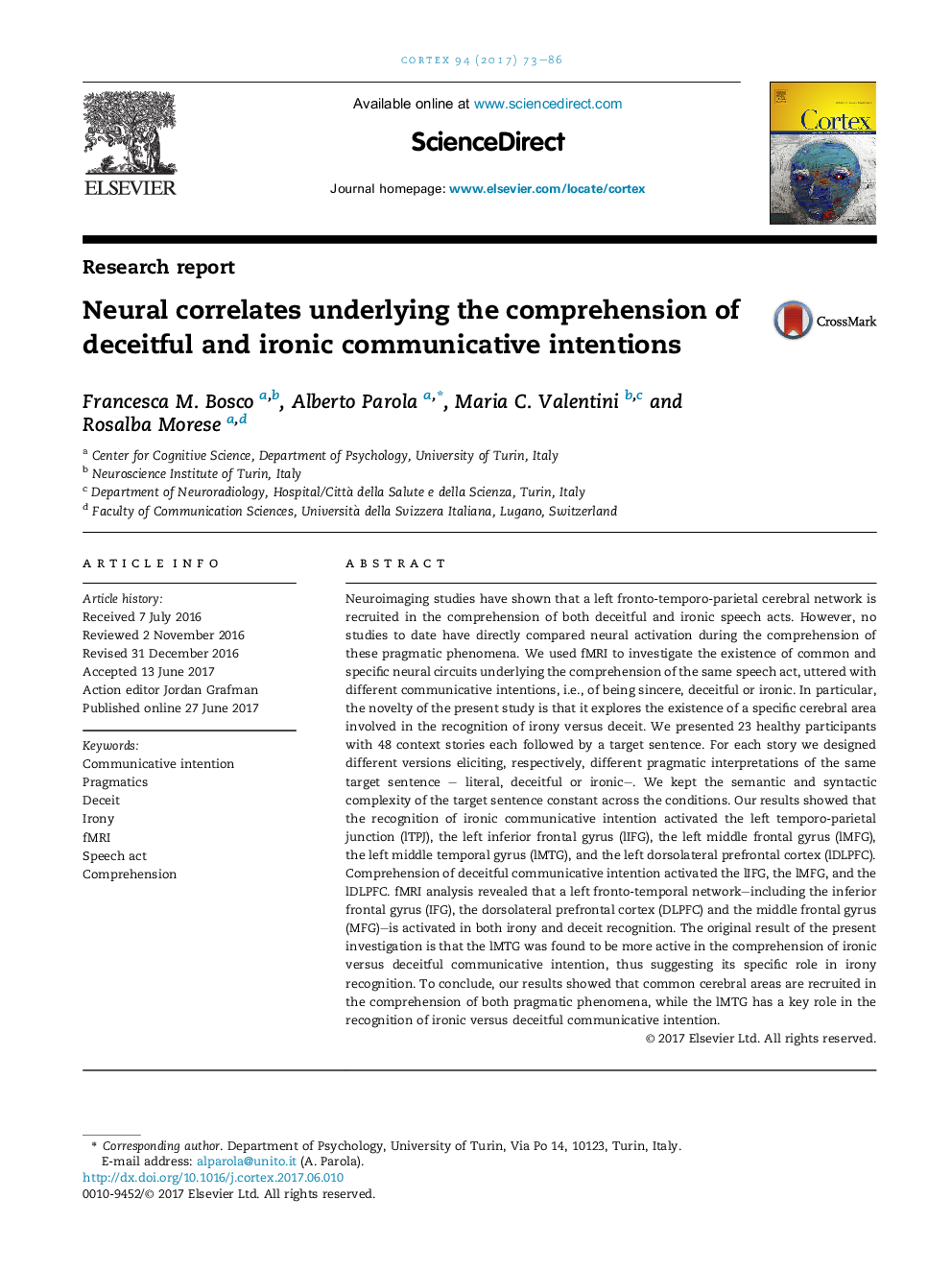| کد مقاله | کد نشریه | سال انتشار | مقاله انگلیسی | نسخه تمام متن |
|---|---|---|---|---|
| 5044569 | 1475438 | 2017 | 14 صفحه PDF | دانلود رایگان |
Neuroimaging studies have shown that a left fronto-temporo-parietal cerebral network is recruited in the comprehension of both deceitful and ironic speech acts. However, no studies to date have directly compared neural activation during the comprehension of these pragmatic phenomena. We used fMRI to investigate the existence of common and specific neural circuits underlying the comprehension of the same speech act, uttered with different communicative intentions, i.e., of being sincere, deceitful or ironic. In particular, the novelty of the present study is that it explores the existence of a specific cerebral area involved in the recognition of irony versus deceit. We presented 23 healthy participants with 48 context stories each followed by a target sentence. For each story we designed different versions eliciting, respectively, different pragmatic interpretations of the same target sentence - literal, deceitful or ironic-. We kept the semantic and syntactic complexity of the target sentence constant across the conditions. Our results showed that the recognition of ironic communicative intention activated the left temporo-parietal junction (lTPJ), the left inferior frontal gyrus (lIFG), the left middle frontal gyrus (lMFG), the left middle temporal gyrus (lMTG), and the left dorsolateral prefrontal cortex (lDLPFC). Comprehension of deceitful communicative intention activated the lIFG, the lMFG, and the lDLPFC. fMRI analysis revealed that a left fronto-temporal network-including the inferior frontal gyrus (IFG), the dorsolateral prefrontal cortex (DLPFC) and the middle frontal gyrus (MFG)-is activated in both irony and deceit recognition. The original result of the present investigation is that the lMTG was found to be more active in the comprehension of ironic versus deceitful communicative intention, thus suggesting its specific role in irony recognition. To conclude, our results showed that common cerebral areas are recruited in the comprehension of both pragmatic phenomena, while the lMTG has a key role in the recognition of ironic versus deceitful communicative intention.
Journal: Cortex - Volume 94, September 2017, Pages 73-86
